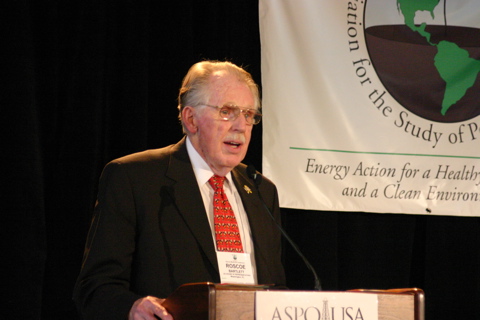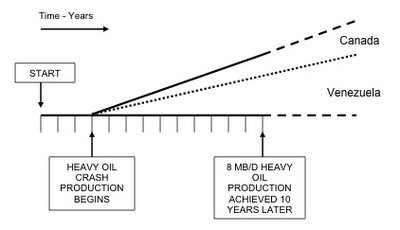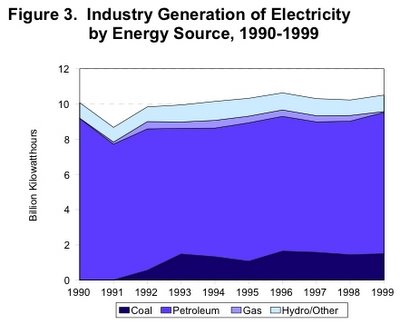199. TDP PLANT SHUT DOWN DUE TO VILE STENCH
Thermal depolymerization (TDP) is a technique which uses heat and pressure to convert organic waste into crude oil. The process is a favorite of business-as-usual cornucopians who think the US could easily produce 10mbd of oil from landfills and other sources of garbage. To demonstrate the viability of the concept, they point to the Renewable Environmental Solutions (RES) plant in Carthage, Missouri, which is currently producing about 200 barrels of fuel oil per day from turkey offal provided by a ConAgra turkey rendering plant.
The hype surrounding this tiny facility has been way overblown:
When RES opened in 2003, the media and the scientific community hailed the technology as a solution to America's dependence on foreign oil, global warming, contaminated feedstock and landfill shortages. That was just for starters. The New York Times Magazine's 2003 "Year in Ideas" issue cited RES, noting that "the day might yet come when we'll turn everything we don't want into the very stuff that, like it or not, makes our world go around." Scientific American named RES's parent company, Changing World Technologies, to its "list of winners," a prized spot among the top 50 innovators of 2003. Money magazine called Changing World Technologies "the Next Big Thing." MIT Technology Review, Fortune, Fast Company and Business Week were just some of those who weighed in on the technology's potential. And in Discover magazine, a story called "Anything Into Oil" described how the technology could ultimately produce 4 billion barrels of light crude oil a year — roughly half the amount that the United States used in 2001. Investors — including ConAgra, the New York real-estate investment firm Sterling Equities and tire distributor Max Finkelstein — have poured $100 million into Changing World Technologies, according to its 47-year-old CEO, Brian Appel.There is a catch, however. The plant stinks like you can't believe:
Chemistry, it appeared, had caught up with science fiction, recalling the time-traveling DeLorean that runs on garbage scraps in the movie Back to the Future.Source
But the stench passing over her house these days in Carthage makes her want to gag. "There are really just no words to describe it," she says. "The smell is so horrible." If it makes her think of anything, she says, it's a corpse, rotting in the sun right there on her lawn. The reek sometimes lasts an hour or two. Sometimes it stays all day. "I have vomited in my yard," she says.SourceIn fact, the stench from this plant has been so persistent and disgusting that the Governor of Missouri ordered it to shutdown yesterday:
Gov. Blunt orders RES in Carthage to close
Updated: 2005-12-28 17:28:28-06
JEFFERSON CITY Gov. Matt Blunt today ordered the Missouri Department of Natural Resources (DNR) to temporarily close Renewable Environmental Solutions (RES) Inc., of Carthage until the department reviews the company's operations and gives them the opportunity to determine what additional steps it can take to become compliant with state air quality rules and operate without producing a vile odor.
Blunt also directed DNR to pursue every legal option to ensure the plant is compliant with state clean air laws and to refer any violations to the attorney general for legal action.
"The people of Carthage have endured terrible odors from the plant for too long,” Blunt said. “I want the business to be successful but the concerns of the people who live and work near the plant is more important to me. If left unresolved, this one business will have a negative impact on the region by hurting tourism and job growth. We simply cannot allow one company to bring down an entire community."Source

















